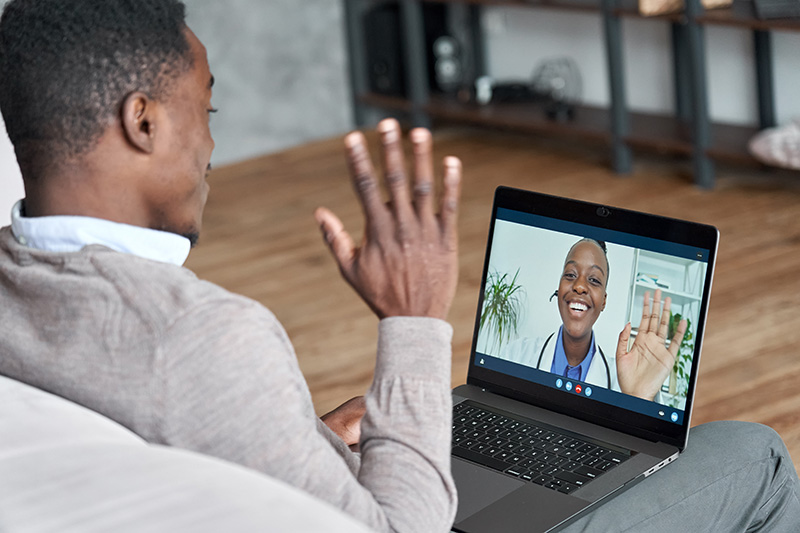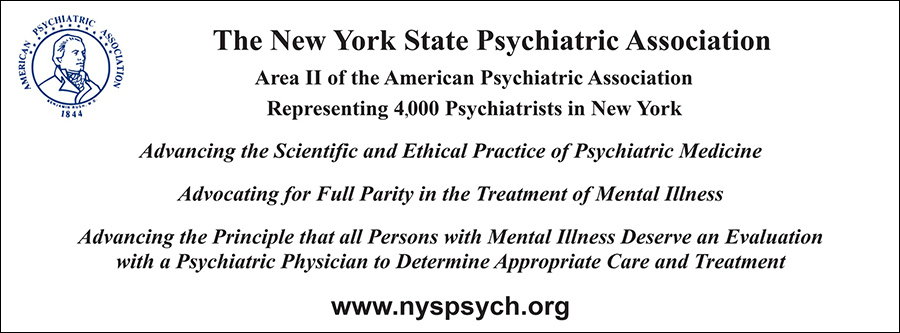The Random House College Dictionary defines stigma as “a stain or reproach, as on one’s reputation.”1 Dictionary.com adds to this definition “a mark of disgrace or infamy.”2 In the context of mental health, stigma means a negative perception of mental illness, which has long served as a significant barrier to accessing essential mental health care and treatment. Stigma has been proven to be pernicious and damaging, both on a personal and societal level. In fact, experts have stated that “stigma and discrimination in relation to mental illnesses have been described as having worse consequences than the conditions themselves.”3

Stigma is based on fear and the demonization of mental illness and individuals with mental illness are often seen as dangerous and unpredictable. However, these fears are often unfounded. According to the National Center for Biotechnology Information:
The public perception of psychiatric patients as dangerous individuals is often rooted in the portrayal of criminals in the media as “crazy” individuals. A large body of data suggests otherwise. People with mental illness are more likely to be a victim of violent crime than the perpetrator. This bias extends all the way to the criminal justice system, where persons with mental illness get treated as criminals, arrested, charged, and jailed for a longer time in jail compared to the general population.4
Stigma can be divided into three categories: (1) public stigma, which includes negative or discriminatory attitudes among members of the public; (2) self-stigma, which includes an individual’s own negative attitude and feelings of shame; and (3) institutional stigma, which includes systemic policies of government or private industry that may result in limited opportunities for people with mental illness.5 For individuals, the consequences of stigma include decreased hope, lower self-esteem, increased symptomatology, difficulties with social relationships, decreased likelihood of remaining in treatment and increased difficulties with work and productivity.6 Stigma contributes to the fact that more than half of those with a mental health condition go without treatment, according to Mental Health America.7
A 2019 survey conducted by the American Psychiatric Association found nearly half of workers are comfortable talking about mental health in the workplace with one-third worried about potential repercussions if they pursue mental health care.8 The survey also found only one in five employees are completely comfortable taking about mental health with colleagues and supervisors, while finding a generational divide as millennials are almost twice as likely as baby boomers to be comfortable (62% vs. 32%) with talking about mental health in the workplace. The survey also found most workers could identify a colleague in need and would be comfortable reaching out.
A few years later, the data shows continued progress. In 2020, the National 4‑H Council commissioned a survey with the Harris Poll, exploring adolescents’ experiences and perceptions related to mental health. Among the key findings: 81% of teens believe that mental health is a “significant issue” for youth; 64% believe living through the pandemic will have lasting impact for generations; 82% urged fellow Americans to talk more openly and honestly about mental health; and 83% agreed with the statement “It is important for people to take action with their mental health.”9
However, stigma is still a powerful force that inhibits access to care. Stigma regarding mental illness may be particularly strong among diverse racial or ethnic communities due to certain cultural beliefs or mores. For example, researchers in England found that children from Black, Asian, and Minority Ethnic backgrounds were less likely to access government mental health services and noted that “telepsychiatry has great potential to reduce the impact of stigma as service-users can access services discreetly.”10 Researchers also noted that “the rapid, widespread adoption of telehealth could be beneficial in reducing barriers between mental health service providers and Afro-Caribbean adolescent users.”11
Another community that often experiences difficulty accessing the mental health system is the farming and agricultural community in the United States. According to the Centers for Disease Control and Prevention, there is a high rate of suicide among farmers and agricultural workers.12 In an attempt to address this problem, the Southern Illinois University School of Medicine and the Illinois Department of Agriculture as well as the Wisconsin Farm Center have instituted pilot programs for mental health hotlines and virtual counseling to reach farmers in need who may live a long distance from a treatment provider or who feel uncomfortable going to a mental health office in person. It appears that even having your car recognized in the parking lot of a mental health practitioner may be enough to dissuade an individual from seeking care.
In fact, the element of personal privacy inherent in telepsychiatry and other virtual mental health services may be a key component of its success. There is no question that confidentiality is essential to mental health treatment.13 However, where stigma is involved, privacy becomes even more important, both on a societal and personal level. Telepsychiatry is unique in that it can be furnished in a private location, such a patient’s home, private office or even automobile. For those individuals unable or unwilling to visit a practitioner’s office, increased access to telehealth may be one piece of the puzzle to ensure that necessary care is delivered.
The good news is that the utilization of telehealth has been steadily climbing, even before the COVID-19 public health emergency. According to the federal Substance Abuse and Mental Health Services Administration (SAMHSA):
Implementation and use of telehealth as a mode of service delivery has been increasing in recent years. Between 2016 and 2019, use of telehealth doubled from 14 to 28 percent. This trend continued between 2019 and 2020, due in large part to the COVID-19 pandemic. Telehealth visits for mental health increased by 556 percent between March 11 and April 22, 2020.14
A 2021 survey conducted by the American Psychiatric Association found similar data.15 Nearly four in ten Americans (38%) used telehealth services to access care with a medical or mental health professional, a seven-percentage point increase from the fall of 2020.16 More than 80% of Americans have used telehealth services since the onset of the pandemic. Sixty-nine percent of survey respondents utilized telehealth through a video format while 38% used audio-only telehealth. The survey also found 59% of Americans would use telehealth services for mental health, and 43% plan to use telehealth when the pandemic is over. In addition, a 2021 survey conducted by NAMI found that 83% of survey participants were satisfied with telehealth and 79% stated that telehealth made it easier for them to access care.17
For many years, NYSPA has been advocating for mental health parity – equivalent coverage and reimbursement for the treatment of mental health and substance use disorders. This year, our efforts came to fruition and NYSPA’s Government Relations Team of Richard Gallo and Karin Carreau of Carreau Consulting, along with other advocacy partners, led a successful effort to enact telehealth payment parity in New York State, a feat that only a dozen or so states have managed to achieve.
The enacted New York State budget for 2022-2023 included landmark legislation mandating reimbursement parity for coverage of telehealth services, effective April 1, 2022. This legislation requires payment “… on the same basis, at the same rate, and to the same extent the equivalent services… are reimbursed when delivered in person.” The parity provisions will apply to the Medicaid program and to all insurers and health plans regulated by the New York State Insurance Law. The budget provisions also require that insurers maintain an adequate network of providers to meet the telehealth needs of the insured. Finally, the legislation requires the Department of Financial Services, in collaboration with the Department of Health, to conduct a study and issue a report by December 31, 2023, evaluating the impact of telehealth reimbursement parity during the first year. As the law currently includes a sunset provision for April 1, 2024, the substance of this report will be a factor in deciding if the law should be extended beyond 2024.
In a recent issue of the American Journal of Managed Care, Ellen Beckjord, a licensed psychologist and Associate Vice President of Population Health and Clinical Transformation at UPMC Health Plan, described the impact of COVID-19 on stigma as a “silver lining.” She writes:
The best description of how the COVID-19 pandemic has affected stigma around mental health is not that it has lessened stigma, it’s that COVID-19 has created an opportunity to lessen the stigma associated with mental health. COVID-19 has cracked stigma’s armor; it’s put a foot in the door that has, for so long, shut people off from seeking and receiving help for all kinds of mental health challenges. Keeping mental health in the shadows doesn’t protect us from shame and embarrassment, it robs us of opportunities to observe – and celebrate – our resilience. Making real changes regarding how we approach mental health challenges won’t expose our weaknesses – it will expose our strengths. Embracing the need to tend to our mental health is an act of humanity and an act of love.18
This is a sentiment that reverberates across the mental health professions. Despite the hardships of the pandemic, the exponential expansion of telehealth has truly been a silver lining. Telehealth is one of a variety of tools that society can utilize to reduce and eventually eliminate stigma. Telehealth reimbursement parity is a strong step in the right direction.
Rachel Fernbach is the Deputy Director and Assistant General Counsel of the New York State Psychiatric Association. Jamie Papapetros is Research and Communications Coordinator at New York State Psychiatric Association’s Government Relations Office.
Footnotes
- The Random House College Dictionary. Rev. ed., New York City, Random House, 1998.
- https://www.dictionary.com/browse/stigma
- Thornicroft, Graham, et al. “ Evidence for Effective Interventions to Reduce Mental-health-related stigma and Discrimination.” The Lancet, vol. 387, no. 10023, Mar. 2016, pp. 1123-32, https://doi.org/10.1016/S0140-6736(15)00298-6.
- https://www.ncbi.nlm.nih.gov/books/NBK537064/
- https://www.psychiatry.org/patients-families/stigma-and-discrimination
- Id.
- https://mhanational.org/sites/default/files/2022%20State%20of%20Mental%20Health%20in%20America.pdf
- https://www.psychiatry.org/newsroom/news-releases/about-half-of-workers-are-concerned-about-discussing-mental-health-issues-in-the-workplace-a-third-worry-about-consequences-if-they-seek-help
- https://namiccny.org/mental-health-stigma-and-the-impact-of-the-pandemic/
- https://www.ncbi.nlm.nih.gov/pmc/articles/PMC8035970/
- Id.
- https://investigatemidwest.org/2020/12/08/long-distances-and-stigma-telehealth-seen-as-way-for-farmers-to-access-needed-mental-health-assistance/
- https://psychiatry.org/File%20Library/Psychiatrists/Practice/Ethics/principles-medical-ethics.pdf
- https://store.samhsa.gov/sites/default/files/SAMHSA_Digital_Download/PEP21-06-02-001.pdf
- https://www.psychiatry.org/newsroom/news-releases/New-Nationwide-Poll-Shows-an-Increased-Popularity-for-Telehealth-Services
- Id.
- https://www.nami.org/Support-Education/Publications-Reports/Survey-Reports/2021-Mood-Disorder-Survey
- https://www.ajmc.com/view/contributor-covid-19-and-stigma-about-mental-health-a-pandemic-silver-lining-









[…] it has transformed how therapy is accessed and delivered. It breaks down geographical barriers, reduces stigma around seeking help while ensuring high-quality care and maintaining continuity throughout […]
[…] and confidential platforms, individuals can engage in therapy sessions without the fear of being recognized or stigmatized. This anonymity allows for a safe space where individuals can openly discuss their struggles with […]